| Srl | Item |
| 1 |
ID:
126220
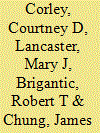

|
|
|
|
|
| Publication |
2012.
|
| Summary/Abstract |
This research follows the Updated Guidelines for Evaluating Public Health Surveillance Systems, Recommendations from the Guidelines Working Group, published by the Centers for Disease Control and Prevention nearly a decade ago. Since then, models have been developed and complex systems have evolved with a breadth of disparate data to detect or forecast chemical, biological, and radiological events that have a significant impact on the One Health landscape. How the attributes identified in 2001 relate to the new range of event-based biosurveillance technologies is unclear. This article frames the continuum of event-based biosurveillance systems (that fuse media reports from the internet), models (ie, computational that forecast disease occurrence), and constructs (ie, descriptive analytical reports) through an operational lens (ie, aspects and attributes associated with operational considerations in the development, testing, and validation of the event-based biosurveillance methods and models and their use in an operational environment). A workshop was held in 2010 to scientifically identify, develop, and vet a set of attributes for event-based biosurveillance. Subject matter experts were invited from 7 federal government agencies and 6 different academic institutions pursuing research in biosurveillance event detection. We describe 8 attribute families for the characterization of event-based biosurveillance: event, readiness, operational aspects, geographic coverage, population coverage, input data, output, and cost. Ultimately, the analyses provide a framework from which the broad scope, complexity, and relevant issues germane to event-based biosurveillance useful in an operational environment can be characterized.
|
|
|
|
|
|
|
|
|
|
|
|
|
|
|
|
| 2 |
ID:
143068
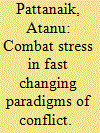

|
|
|
| 3 |
ID:
153987
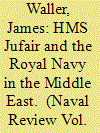

|
|
|
| 4 |
ID:
130325
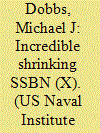

|
|
|
| 5 |
ID:
112448
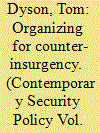

|
|
|
|
|
| Publication |
2012.
|
| Summary/Abstract |
Why do allies not adapt evenly even in time of war? This article maps and explains differentiation in the development of the stabilization and counter-insurgency doctrines of the British and Germanmilitaries during deployment in Afghanistan. In doing so the study analyses the neglected issue of the organizational capabilities of the British and German militaries to develop and apply military doctrine that is appropriate to the exigencies of the contemporary operational environment. Drawing upon documentary analysis and semi-structured interviews, this article uncovers new empirical material on the institutional reforms which have been undertaken to strengthen the adaptability of doctrine and its application in operations. It finds that while the British military's organizational capabilities were characterized by deficits at the tactical level between 2006 and 2009, recent years have seen significant improvement. In contrast, the organizational capabilities of the Germanmilitary remain stunted. While international structure is the main independent variable driving doctrinal adaptability, domestic variables exogenous to the military are the dominant intervening factor determining the development of effective organizational capabilities. Neoclassical realism provides the strongest analytical leverage in understanding the factors determining the capacity of militaries to adapt doctrine to the operational environment.
|
|
|
|
|
|
|
|
|
|
|
|
|
|
|
|
| 6 |
ID:
097933
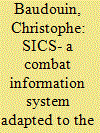

|
|
|
| 7 |
ID:
123480


|
|
|